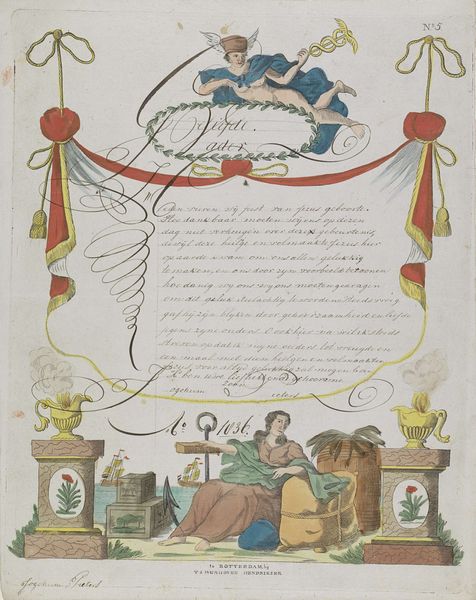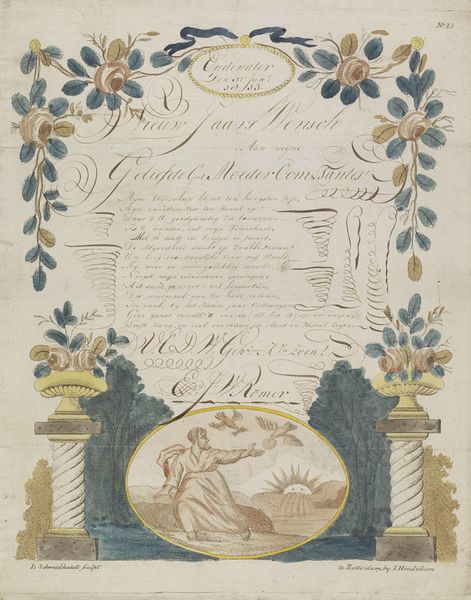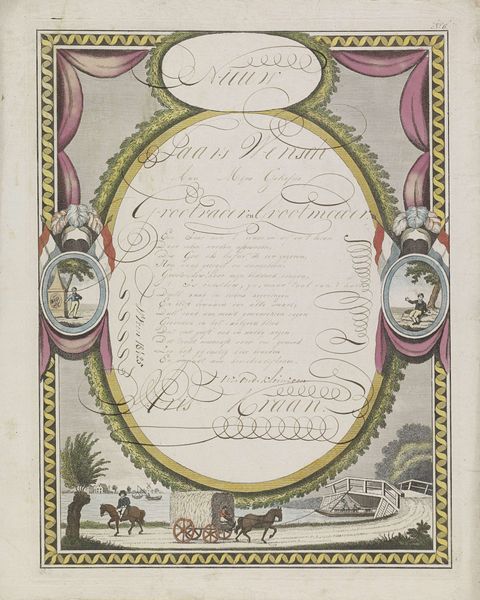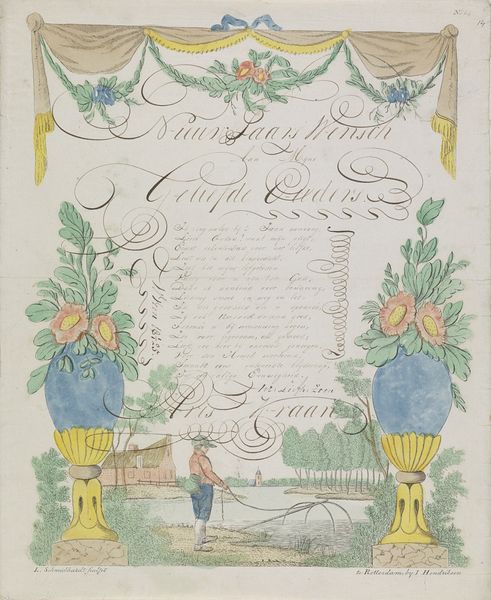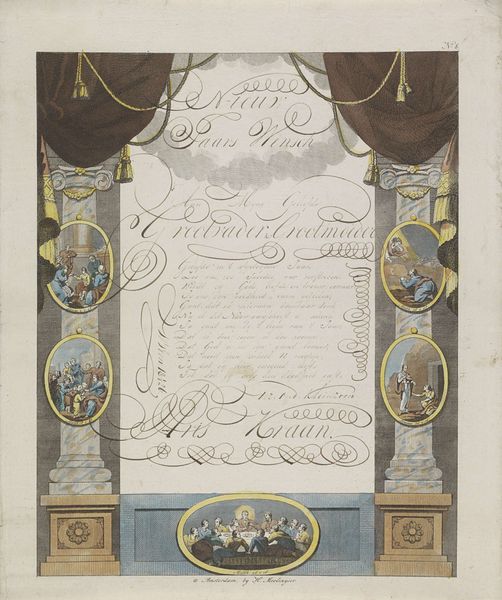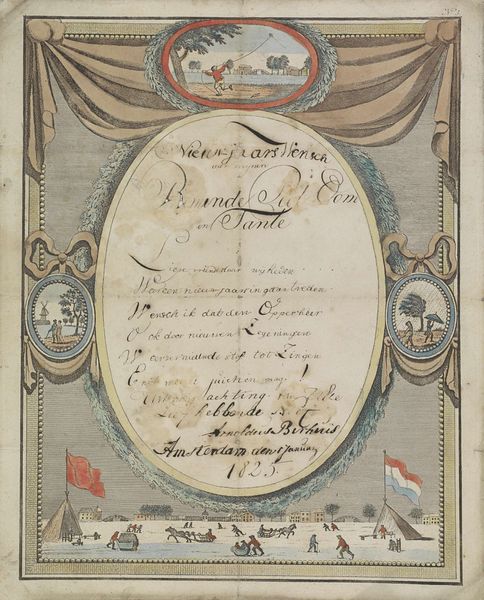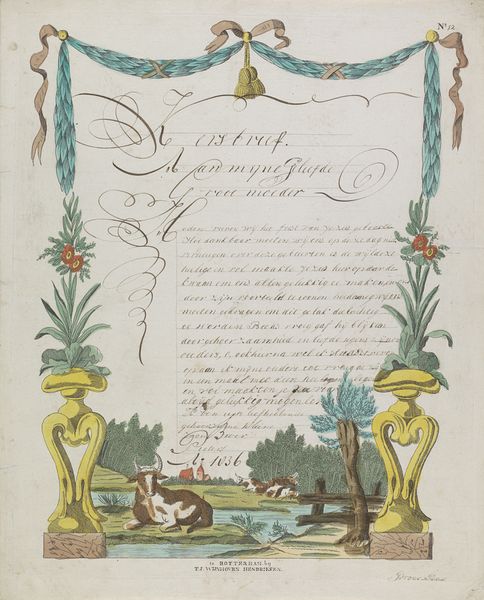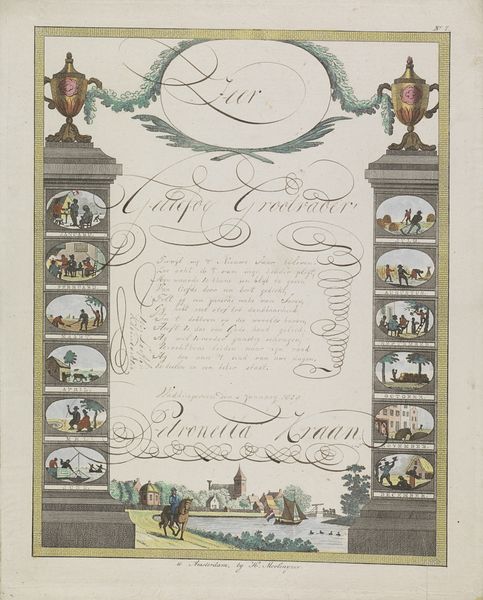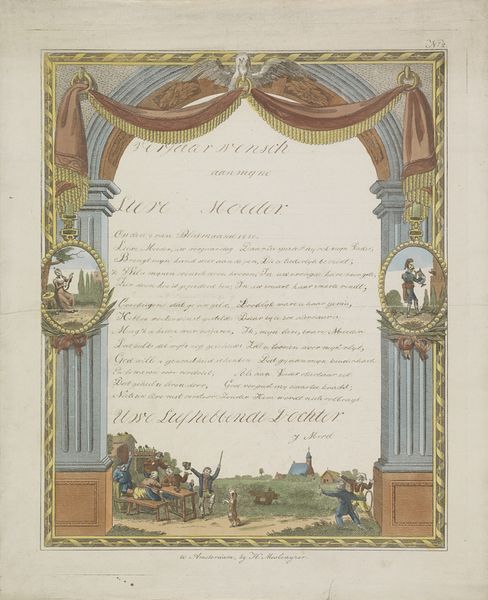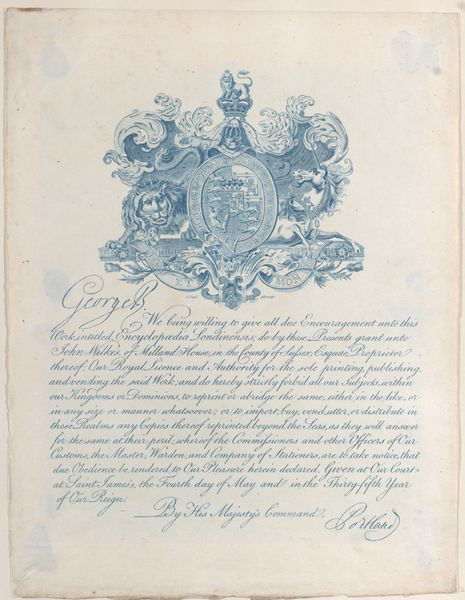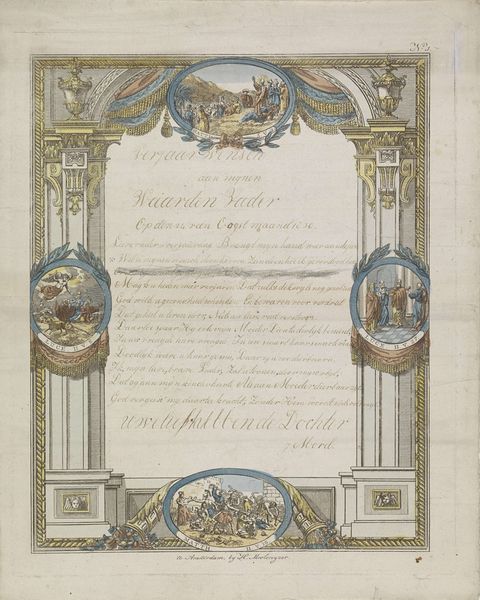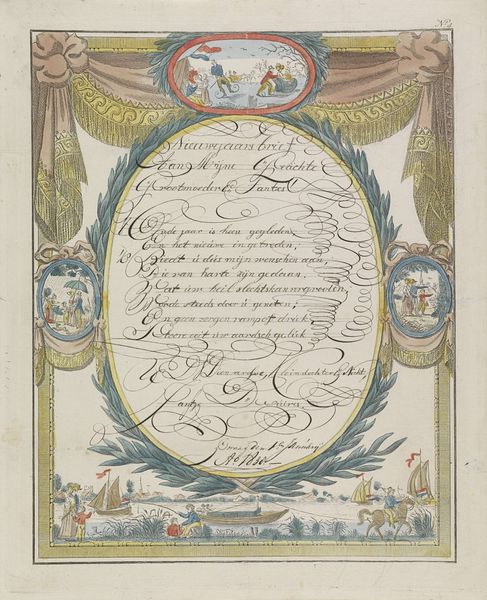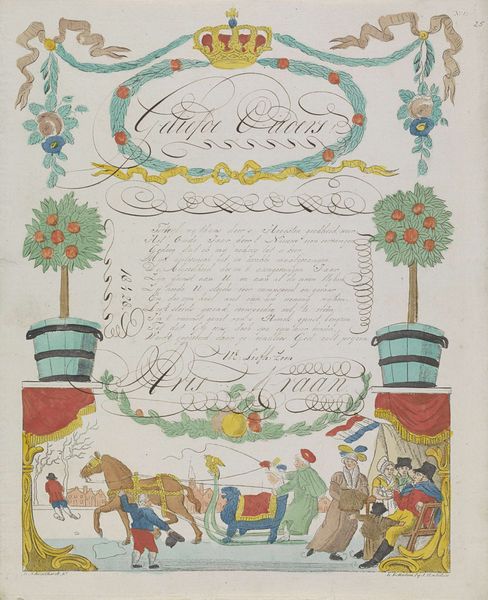
drawing, watercolor
#
drawing
#
narrative-art
#
landscape
#
figuration
#
watercolor
#
romanticism
#
orientalism
Dimensions: height 390 mm, width 306 mm
Copyright: Rijks Museum: Open Domain
Curator: Looking at this drawing, I am struck by how romanticized and exoticized the imagery is. There's a distinct theatricality, almost like a stage set. Editor: Indeed. Let's delve deeper into what we're seeing. This piece, titled "Wensbrief met zwarte mannen op olifanten," was created around 1827 by Leonardus Schweickhardt. It’s executed in watercolor and drawing. What narratives do you think it is telling? Curator: Immediately, the prominent placement of the African figures atop elephants transports me to associations with colonialism and power dynamics. There's an undeniably "Orientalist" gaze at play here. Their garb seems fantastical rather than reflective of actual cultures. This reinforces that theatrical point of yours. Editor: Exactly, and these figures and animals are set against the background of what looks like tropical vegetation. As with any symbolism, however, the specific message sent relies on its cultural interpretation. Let's consider the elephant, in this case. Though now used derisively in American politics, the pachyderm traditionally embodies ideas of steadfastness, wisdom, and memory. As for the feathers atop the men's head and the horns they carry: how would you interpret that? Curator: These elements absolutely heighten the exoticism but also lend a primitive touch. However, there is that canopy above a poem. It feels like they are acting to enhance and enshrine its importance, reflecting on the context it creates through its historical viewpoint. This could reflect on the role of this message card: was the artist simply catering to contemporary tastes or trying to highlight social tensions? Editor: Ultimately, the symbolic reading will change for its beholder based on a variety of factors. I still see clear Romantic sensibilities within this piece, an admiration for "foreign" settings despite what modern eyes recognize as inherent exoticization, a fascination with cultural narratives very removed from those in the West. It underscores that potent ability imagery has for encapsulating collective imaginings, beliefs and even tensions. Curator: You’re right, and it brings a sharp historical edge to it for modern viewing as well, highlighting how artistic perspectives have evolved, and sometimes painfully clashed, over time. Thank you for giving that depth of analysis!
Comments
No comments
Be the first to comment and join the conversation on the ultimate creative platform.
